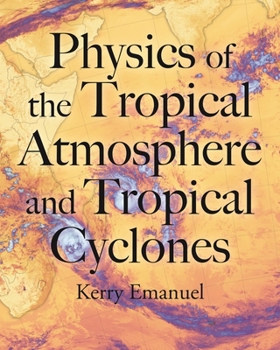Physics of the Tropical Atmosphere and Tropical Cyclones
A comprehensive text and reference on tropical meteorology and hurricane science for graduate students and scholars
Physics of the Tropical Atmosphere and Tropical Cyclones provides readers with a firm grounding in the observations, theory, and modeling of tropical weather systems and tropical cyclones. How and why do tropical cyclones form? What physics underpins their genesis, intensification, structure, and power? This authoritative and accessible book tackles these and other questions, providing a unifying framework for understanding most tropical weather systems. It emphasizes the importance of understanding the dynamics and thermodynamics of the tropical atmosphere, developing a conceptual foundation through the application of key approximations such as the maintenance of moist adiabatic temperature profiles and critical gradients of density on isobaric surfaces by the Hadley and Walker circulations and monsoons. It treats latent heat release as a fast process that can be absorbed into the definition of entropy and locates the cause of circulations larger than squall lines in radiation and surface heat fluxes. Tested in the classroom, this is an ideal textbook for young scientists and an essential reference for seasoned practitioners.Provides a comprehensive and quantitative entr e to tropical meteorology, offering a framework for understanding most tropical weather systemsCovers the Hadley and Walker circulations, El Ni o-Southern Oscillation, monsoons, equatorial waves, easterly waves, squall lines, aggregated convection, and tropical cyclonesIncludes challenge questions in every chapter and codes that run simple models of radiative-convective equilibrium, Hadley and monsoon circulations, linear equatorial models, and tropical cyclonesPrepares students to tackle important questions about the effects of climate change on hurricanesAn illustrations package is available for instructors
Format:Hardcover
Language:English
ISBN:069116892X
ISBN13:9780691168920
Release Date:April 2026
Publisher:Princeton University Press
Length:704 Pages
Customer Reviews
0 rating





